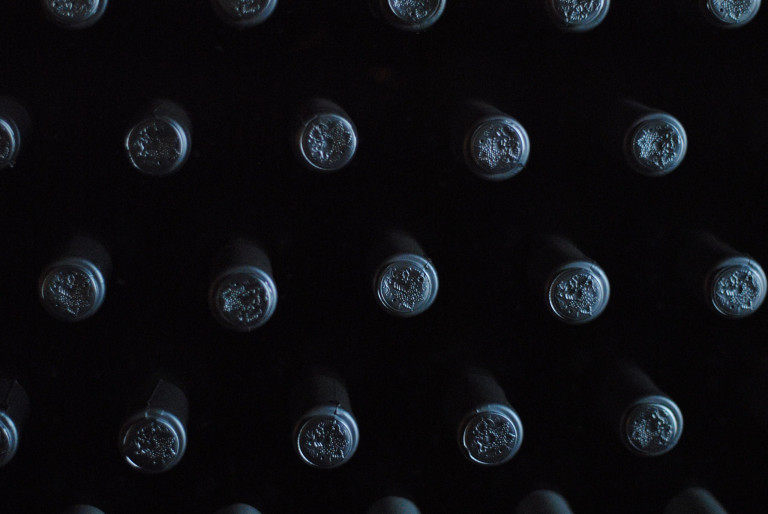What Type of Container Works Best for Storing Processed Coffee?
This post contains affiliate links. Click here to read my affiliate policy.
Last Updated on August 15, 2025

Freshly processed coffee can lose its aroma and taste faster than expected if stored in the wrong container. The right storage choice helps preserve the flavor, aroma, and quality for longer periods, making each cup more satisfying. The best container protects coffee from air, light, moisture, and temperature changes.
Different materials and sealing methods offer unique benefits, and each can affect the freshness in distinct ways. From sleek stainless steel canisters to classic tin jars, the options vary in style and performance. Understanding these differences makes it easier to choose a container that keeps coffee at its best.
Airtight Stainless Steel Canisters
Airtight stainless steel canisters block light and limit oxygen exposure, two factors that cause coffee to lose flavor. The solid walls prevent UV rays from breaking down the oils in the beans, while the seal keeps air out. This design helps preserve both aroma and taste for longer periods.
Many models include one-way valves that release carbon dioxide without letting air in. Freshly roasted beans release gases, and this feature prevents pressure build-up while maintaining freshness. A secure latch or twist lid further improves the seal.
For those who buy Sonora Costa Rica coffee beans online, storing them in an airtight stainless steel canister helps maintain the bold and sweet profile created during processing. The container keeps the beans protected until they are ready for grinding.
These canisters are available in various sizes to suit different storage needs. Smaller versions work well for daily use, while larger ones can hold bulk purchases without compromising quality.
Opaque Ceramic Coffee Jars
Opaque ceramic jars block light, which helps preserve the flavor and aroma of processed coffee. Light exposure can speed up the breakdown of aromatic compounds, so a light-proof container gives better protection than clear glass.
These jars also resist heat transfer better than thin metal or glass. A stable temperature helps reduce the rate of oxidation, which can dull the taste over time.
A well-fitted lid is important for keeping air and moisture out. Air exposure leads to staleness, while moisture can cause clumping or mold in ground coffee.
Ceramic does not react with coffee oils, so it maintains the natural taste without adding unwanted flavors. This makes it a good choice for those who value purity in storage.
For best results, the jar should remain in a cool, dry place away from direct sunlight. This combination of material, seal, and placement helps keep coffee fresher for longer periods.
Vacuum-Sealed Coffee Containers
Vacuum-sealed coffee containers remove most of the air inside, which reduces oxidation and slows flavor loss. This method helps maintain the aroma and taste of processed coffee for a longer period compared to standard airtight containers.
These containers often use a manual or automatic pump to create a low-oxygen environment. By limiting exposure to air, moisture, and light, they help preserve the coffee’s natural oils and prevent staleness.
Materials such as stainless steel or opaque plastic add extra protection against light, while strong seals block humidity. Some models allow the user to release the vacuum easily before opening, which makes them practical for daily use.
For processed coffee stored at room temperature, vacuum-sealed containers provide an effective balance between convenience and freshness retention. They work well for both whole beans and ground coffee, though ground coffee may still lose flavor faster than beans over time.
Glass Jars with Silicone Seals
Glass jars with silicone seals create a tight closure that helps protect processed coffee from air and moisture. This barrier slows oxidation, which can cause flavor loss over time. The clear glass also allows easy viewing of the contents without opening the jar.
Borosilicate glass offers better resistance to temperature changes compared to standard soda-lime glass. This makes it less likely to crack if stored in varying conditions. However, any glass jar should be kept away from direct sunlight to avoid heat exposure that can degrade coffee quality.
Silicone seals are flexible and form an even contact with the jar’s rim. This reduces the chance of leaks and helps maintain aroma. They also tend to last longer than some plastic seals, though they should be inspected periodically for wear.
Many glass jars come in different sizes, making them suitable for both small batches and larger quantities. Choosing the right capacity helps minimize excess air inside, which can further preserve freshness.
Tin Coffee Tins with Tight Lids
Tin coffee tins with secure lids can help protect processed coffee from air and light. A well-fitted lid reduces exposure to oxygen, which slows flavor loss. This makes them suitable for short to medium-term storage.
They often provide a sturdy exterior that resists damage if dropped or stacked. However, the seal quality can vary, and some tins may not block moisture as effectively as other materials.
Some users notice that tins can absorb or transfer odors over time. Therefore, a clean, dedicated tin works best for maintaining the coffee’s original aroma.
While tins can look appealing on a countertop, they should be kept in a cool, dry place away from direct sunlight. Proper storage conditions further preserve freshness and taste.
Conclusion
The best container for processed coffee protects it from air, light, heat, and moisture. Airtight seals paired with non-reactive materials such as glass, ceramic, or stainless steel help maintain flavor and aroma for longer periods.
Opaque designs prevent light exposure, which can degrade quality over time. Containers should also be kept in a cool, dry location away from direct sunlight or heat sources.
Small batch storage reduces the time coffee spends exposed to air after opening, which helps preserve freshness. By combining the right container type with proper storage habits, coffee retains its intended taste and aroma for longer.






